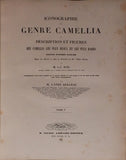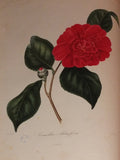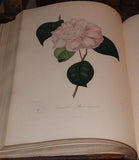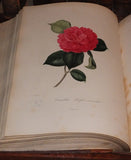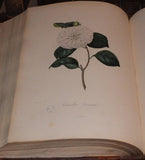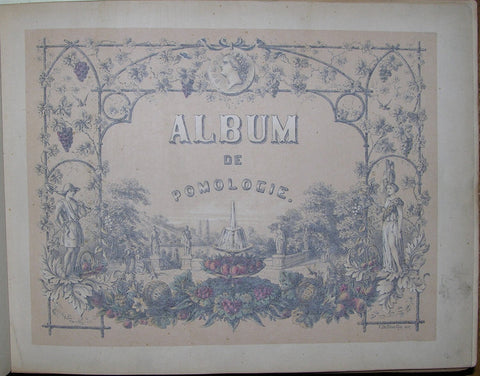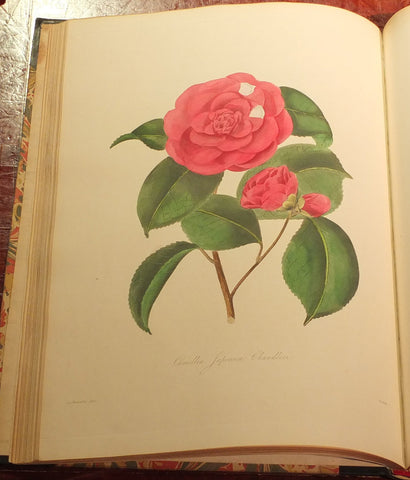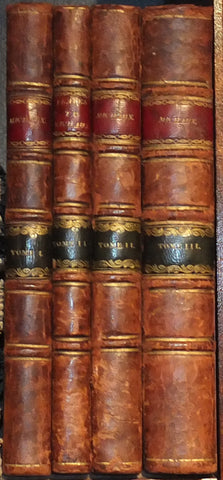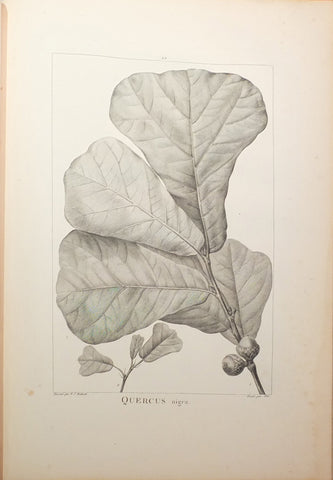Abbé Laurent Berlèse (1784-1863), Iconographie du genre Camellia, ou description et figures des Camellia les plus beau et les plus rares.
Abbé Laurent Berlèse (1784-1863)
Iconographie du genre Camellia, ou description et figures des Camellia les plus beau et les plus rares.
Paris: H. Cousin, [1839] - 1841 -1843.
3 volumes, folio (14 x 10 1/8 inches). Half-titles, dedication leaf and 4 leaves of text addressed to the members of the Societe Royale d'Horticulture de Paris. 300 fine engraved and stipple-engraved plates, partly handcolored and finished by hand after J.-J. Jung by Dumenil, Gabriel and Oudet, under the direction of M. Cousin, printed by Remond (small inoffensive ink library stamp on plates, scattered foxing, spotting and browning, some dampstaining in lower margins of first half of third volume). Contemporary half tan calf, maroon cloth gilt (a bit worn with minor loss to the extremities).
Provenance: with the bookplate and library regulations of the Library of the Massachusetts Horticultural Society Boston on the front paste-down of each volume, and their ink "MHS" monogram on each plate.
THE MOST CELEBRATED ILLUSTRATED MONOGRAPH ON THE CAMELLIA
First edition. Interest in the genus peaked in the middle part of the nineteenth century, when large numbers of seedlings obtained from crossing variants of camellia Japonica were raised and named, mostly by the Verschaffelt family, nurserymen at Ghent in Belgium, and by the Abbé Berlèse in Paris. Lorenzo Berlese was born in Campo Molino near Treviso, north Italy. He moved to Paris as a chaplain, where by 1817, he was already cultivating camellias. He built up a large collection of plants and by 1837 the general proliferation in hybrid varieties and the confusion over nomenclature made it clear to him that a detailed monograph was required. A subscription of 250 names was raised, and the work was published (after a false start with lithograph plates). In 1846 he sold his collection of plants before returning to Italy. The success of Berlèse's work is largely due to J.J. Jung's plates, but there is surprisingly little information about the artist. The Abbé thanks him in the introductory letter to the Members of the Paris Royal Society of Horticulture: his drawings have given life and color to the author's technical descriptions which would otherwise have paled in comparison with the real thing. The plates demonstrate the pervasive influence of Redouté, and the Lindley library index notes that he produced some designs for the periodical "Herbier général de l'Amateur.". The arrangement of the text is unusual: the scientific and practical monograph (under various chapter headings: origins, classification, cultivation, etc.) is printed on the lower half of the recto of each text leaf with the description of the facing plate on the upper half. The versos of the text leaves are blank. Dunthorne 30; Great Flower Books p. 50; Nissen, BBI 150.
We Also Recommend



